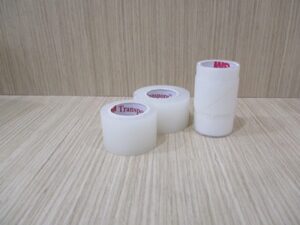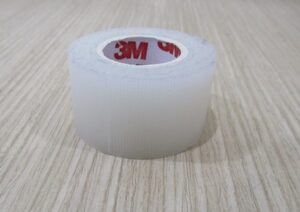Durapore is a brand of medical tape that is widely used in healthcare settings. It is a durable, cloth-like tape that is made of a synthetic material known as polyethylene. Durapore tape is available in different widths and lengths to suit different applications.
Durapore tape is known for its strength and durability, making it ideal for use in high-stress situations. It adheres well to both skin and other surfaces, making it versatile and easy to use. Durapore tape is also waterproof and breathable, which makes it suitable for use in wet environments or on areas of the body that need to breathe.
Uses of durapore
Durapore tape is commonly used in wound care to secure dressings or bandages in place. It is also used in orthopedic settings to immobilize joints or to support the body after surgery. In addition, Durapore tape is often used in emergency medicine to secure IV catheters or other medical devices.
One of the unique features of this tape is its ability to remain in place for an extended period without losing its adhesive strength. This is particularly important in wound care, where the tape needs to stay in place for several days or longer.
Despite its strength and durability, Durapore tape is gentle on the skin and does not cause irritation or damage. It can be easily removed without causing discomfort to the patient, making it a popular choice among healthcare professionals.
Application of tape
The application of Durapore tape depends on the specific medical situation and the area of the body being treated. However, there are some general principles that apply to the application of Durapore tape in healthcare settings.
Before applying Durapore tape, it is important to clean and dry the area of the body being treated. This will ensure that the tape adheres well and does not cause irritation or discomfort. Once the area is clean and dry, the tape can be cut to the desired length and width.
To apply Durapore tape, the tape is gently pressed onto the skin or surface being treated. It is important to avoid stretching the tape, as this can cause it to lose its adhesive strength. The tape should be applied firmly, but not so tight that it causes discomfort or restricts blood flow.
Things to remember
When using Durapore tape to secure dressings or bandages, it is important to ensure that the dressing or bandage is securely in place before applying the tape. The tape should be applied in a manner that allows for easy inspection of the wound or dressing without compromising its integrity.
Durapore tape can also be used to immobilize joints or support the body after surgery. In these cases, it is important to follow the specific instructions of the healthcare provider regarding the application of the tape. The tape should be applied in a way that provides adequate support without restricting movement or causing discomfort.
When removing Durapore tape, it is important to do so gently to avoid causing damage to the skin. The tape should be slowly peeled off the skin, taking care not to pull the skin or cause irritation. If the tape is difficult to remove, it can be gently soaked with warm water or saline solution to make it easier to remove.
Conclusion
In summary, the application of Durapore tape requires attention to detail and a careful approach to ensure that it adheres well and provides the desired support or protection without causing discomfort or damage to the skin. Healthcare professionals should follow specific guidelines regarding the use of tape to ensure the best possible outcomes for their patients.
Durapore tape is a reliable and versatile medical tape that is widely used in healthcare settings. Its strength, durability, and ability to adhere well to both skin and other surfaces make it an excellent choice for a variety of medical applications, including wound care, orthopedics, and emergency medicine.